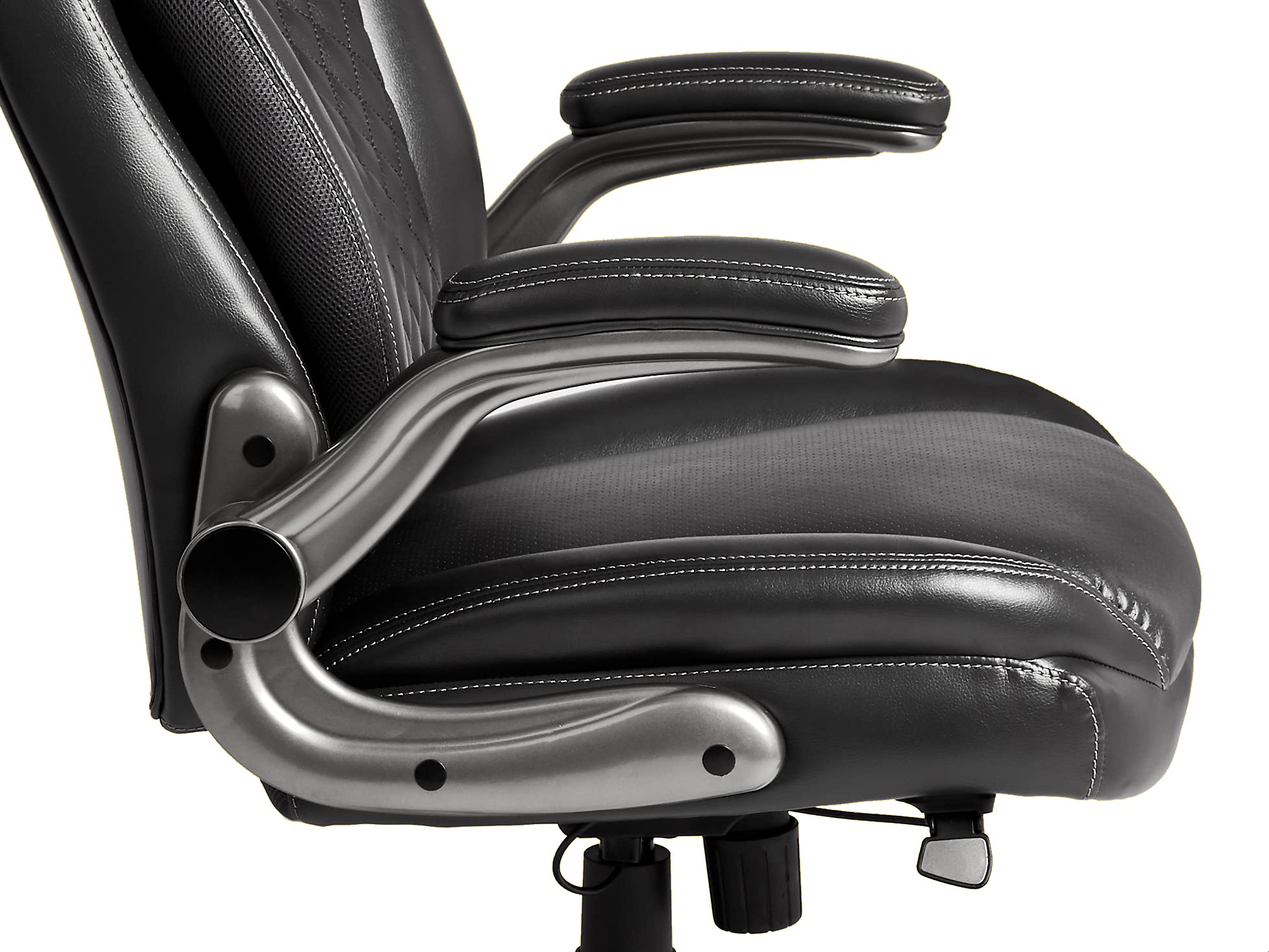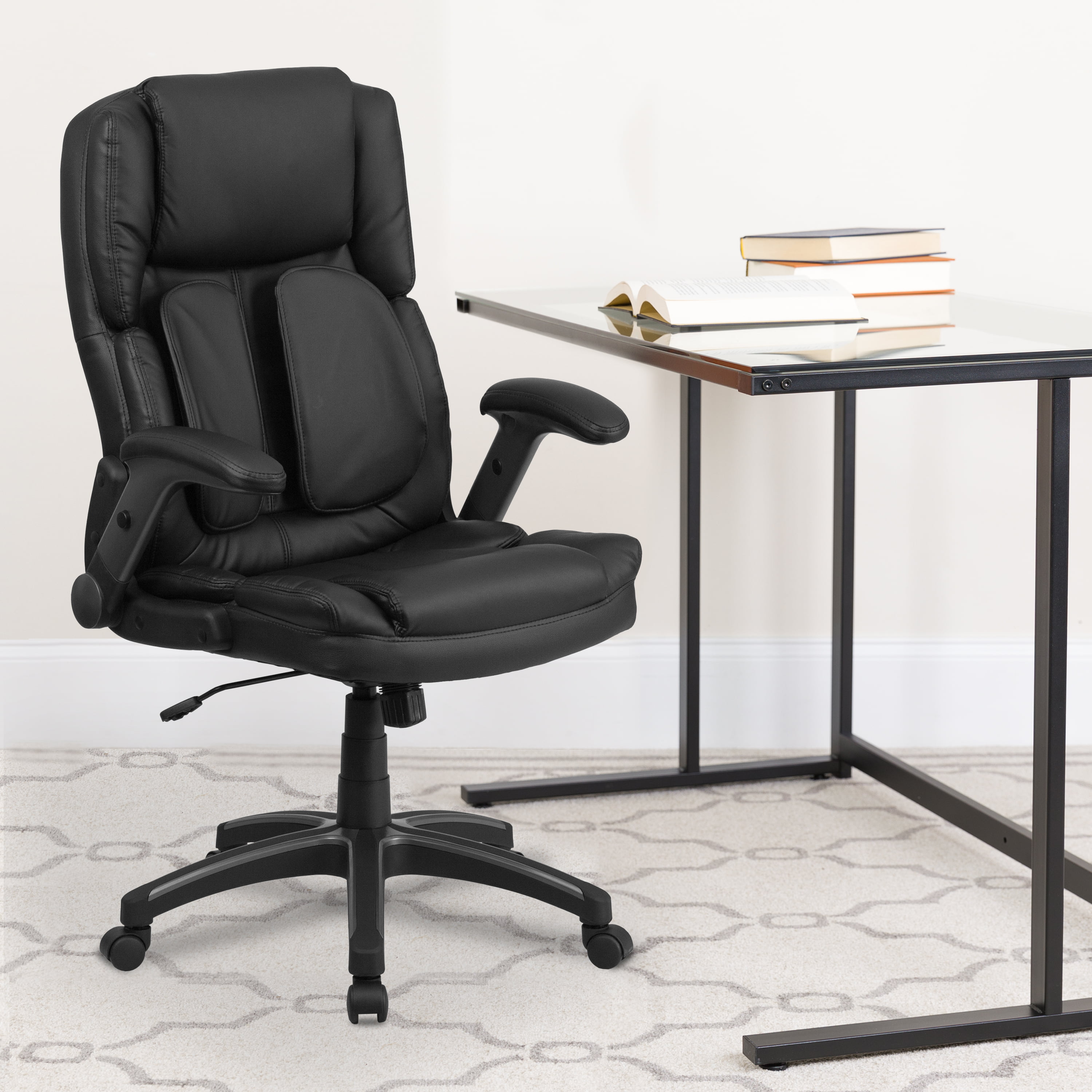Ergonomics and Comfort: Black Office Chair With Arm Rest

Maintaining proper posture while seated is crucial for long-term health and well-being. Poor posture can lead to back pain, neck strain, and other musculoskeletal issues. The design of an office chair significantly impacts spinal alignment and overall comfort, influencing how well a user maintains a healthy posture throughout the workday. A well-designed chair provides necessary support to encourage a neutral spine position, minimizing strain and discomfort.
The relationship between chair design and comfort is multifaceted. Factors such as seat height, backrest angle, lumbar support, and armrest design all play a significant role in user comfort and postural support. A chair that doesn’t properly support the natural curves of the spine forces the body into unnatural positions, leading to fatigue and discomfort. Conversely, a well-designed chair promotes good posture, reducing strain and promoting comfort even during prolonged periods of sitting.
Armrest Types and Benefits
The choice of armrest significantly affects comfort and ergonomics. Different armrest designs cater to varied needs and preferences. Consideration should be given to adjustability, padding, and overall design when selecting an armrest type.
- Adjustable Height Armrests: These armrests allow users to customize the height to match their desk and body, ensuring optimal elbow positioning and reducing shoulder strain. Proper elbow positioning minimizes tension in the shoulders, neck, and upper back, promoting better posture and comfort.
- Padded Armrests: Providing cushioning, padded armrests enhance comfort by reducing pressure points and promoting better blood circulation. This is especially beneficial for users who spend extended hours seated. The padding material should be durable and breathable to prevent discomfort from heat buildup.
- Fixed Height Armrests: While less adjustable, fixed height armrests offer stability and support. The height should be carefully chosen to match the user’s desk and body to avoid strain. These are often a more cost-effective option, but lack the adaptability of adjustable armrests.
- Width-Adjustable Armrests: These armrests allow for customization of the width to better accommodate different body types and provide comfortable support for the forearms. This feature can significantly improve comfort for individuals with broader or narrower shoulders.
Hypothetical Ergonomic Office Setup, Black office chair with arm rest
Imagine a workspace featuring a black office chair with adjustable height armrests and a contoured backrest providing excellent lumbar support. The chair is positioned in front of a height-adjustable desk, allowing the user to maintain a 90-degree angle at the elbows and knees. The desk is clutter-free, with only essential items within easy reach. Task lighting, such as a desk lamp, provides focused illumination, reducing eye strain. Ambient lighting is soft and diffused to avoid glare and harsh shadows. The chair’s black color complements a minimalist, neutral color scheme in the office, creating a calming and productive environment. The overall setup prioritizes a neutral spinal posture, promoting comfort and reducing the risk of musculoskeletal problems associated with prolonged sitting. This configuration, with the chair as a central component, aims for a holistic approach to workplace ergonomics.
Materials and Durability

The longevity and comfort of your black office chair with armrests are significantly influenced by the materials used in its construction. Understanding these materials and their properties will help you make an informed decision and ensure your chair provides years of reliable service. This section details the common materials, their advantages and disadvantages, and crucial maintenance tips to maximize their lifespan.
Material Properties and Durability of Black Office Chairs
The choice of materials greatly impacts the chair’s overall durability and aesthetic appeal. Here’s a comparison of common materials:
| Material | Pros | Cons | Durability |
|---|---|---|---|
| Mesh | Breathability, flexibility, lightweight, often modern design | Can sag over time, less durable than leather or high-quality fabric, may not provide as much lumbar support | Moderate; lifespan depends on quality and usage. |
| Leather (Genuine and Faux) | Luxury appearance, durable, easy to clean (genuine), relatively easy to maintain (faux) | Genuine leather can be expensive and requires specific cleaning products; faux leather can crack or peel over time. | High (genuine), Moderate (faux); genuine leather, with proper care, can last for decades. |
| Fabric | Wide variety of colors and textures, often more affordable than leather, comfortable | Can stain easily, may wear out faster than leather, prone to attracting dust and pet hair. | Variable; depends heavily on the fabric type and quality. High-quality fabrics can be very durable. |
| Synthetic Leather (PU Leather) | Affordable, durable, easy to clean, water-resistant | Can feel less luxurious than genuine leather, may crack or peel with prolonged exposure to sunlight or extreme temperatures. | Moderate to High; depends on the quality of the PU leather. |
Maintenance Procedures for Extending Chair Lifespan
Proper maintenance significantly extends the lifespan of your office chair, regardless of the material. Here are some key procedures:
Black office chair with arm rest – Regular maintenance is crucial for preserving the appearance and functionality of your chair. Neglecting these steps can lead to premature wear and tear.
- Mesh: Regularly vacuum or wipe down with a damp cloth. Avoid harsh chemicals.
- Leather (Genuine): Condition leather regularly with a leather conditioner to keep it supple and prevent cracking. Wipe spills immediately with a soft cloth and mild soap. Avoid direct sunlight.
- Leather (Faux): Wipe clean with a damp cloth and mild soap. Avoid harsh chemicals and abrasive cleaners. Protect from prolonged exposure to direct sunlight.
- Fabric: Vacuum regularly to remove dust and debris. Spot clean stains immediately with a suitable upholstery cleaner. Consider using fabric protector spray to prevent stains.
- General Maintenance (All Materials): Regularly inspect the chair for loose screws, worn parts, or damage. Tighten loose screws as needed. Avoid excessive weight or strain on the chair. Consider using a chair mat to protect the chair’s base and floor.
